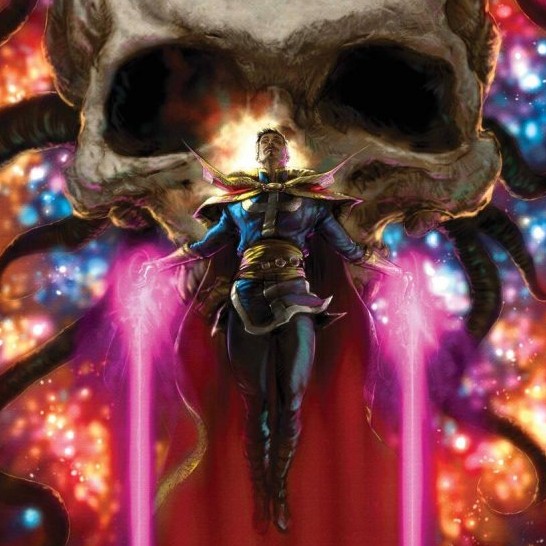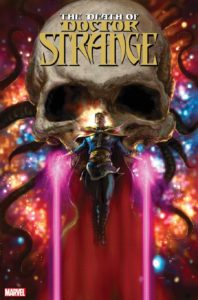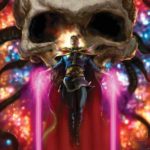
 One of the MCU’s biggest names reaches a comicbook milestone by becoming the latest victim of an eventized demise in this week’s The Death of Doctor Strange #1.
One of the MCU’s biggest names reaches a comicbook milestone by becoming the latest victim of an eventized demise in this week’s The Death of Doctor Strange #1.
With a straightforward title like The Death of Doctor Strange, it’s hard to misconstrue the premise. Doctor Strange is here, and he will die. With two highly-touted movie appearances coming up over the next several months, it might seem odd that Marvel is taking him off the board for an indeterminate amount of time—and they’re already hyping up his replacement— but I would argue that this makes more sense than simply giving him a new ongoing title for synergy’s sake. By killing him off and making a spectacle of it, it brings more attention to the character than there would be otherwise. I know I’ve already seen more publicity for this series over the past few months than any other Doctor Strange series in recent memory, and when he inevitably returns to the land of the living in a year or so, it’ll come with lots of fanfare and (most importantly) higher sales. This stuff really isn’t difficult to comprehend when you see the larger picture at play, but how is The Death of Doctor Strange #1 as a reading experience?
To this first issue’s credit, it’s not false advertising; Dr. Stephen Strange is, in fact, dead by the final page. I was somewhat expecting them to really draw it out (see: Death of Wolverine, coming back in some form soon!), but I’m glad that’s not the case. By cutting straight to the point, the story has more room to develop in a satisfying way rather than edging the audience up until the last minute. One thing I really appreciate about writer Jed MacKay’s approach here is that the bulk of the issue almost plays like a slice-of-life in the day of a superhero surgeon sorcerer, which I’m sure we can all relate to. The day Stephen is doomed to die is fairly mundane. He’s woken up by his talking ghost dog for a walk, performs surgery at the hospital, saves a distressed civilian from harm, teaches a lesson at his magic school, fights some ghouls with Illyana Rasputin, and retires to his study with a glass of wine. Then … he’s killed by an unknown assailant. The good doctor’s death is kept a mystery for now, but there is one surprising twist that arises as a result of his murder that could go in any number of ways.
Joining writer Jed MacKay is artist Lee Garbett, who recently did a run on Captain Marvel that I really enjoyed, and they bring a similarly grounded—but still fanciful—superhero look here. For a book whose title evokes the concept of death, Garbett’s art isn’t solemn or even gritty; it’s spritely and dynamic with bright colors from Antonio Sabela, almost in defiance of the grim topic at hand. This actually makes sense in the context of Doctor Strange as a character, who understands that he is neither the first Sorcerer Supreme nor will he be the last, which he explicitly says in this issue in ominous foreshadowing. While his death is obviously sad for the characters close to him, Stephen himself doesn’t see the idea of it as some great tragedy, and I think it’s fitting for the art to reflect as much. There’s still a little bit of a twinkle in the aesthetic that conveys Stephen’s death is an end, but not the end—and isn’t that the modus operandi of superhero storytelling?



![[REVIEW] GET RECRUITED TO KEEP THE PEACE IN ‘RANGERS OF THE DIVIDE’ #1](https://geekd-out.com/wp-content/uploads/2021/05/deebln6-c0ec8bca-54bb-41b2-9775-687df17e9525-150x150.jpg)
